
This month’s Author Spotlight shines on Henry Herz. Known for his whimsical and educational tales, Henry has authored over a dozen books for kids and many short stories for adult audiences. Considering he got a late start in writing thanks to his background in engineering and political science—yeah, we’ll talk about that!—he’s been impressively prolific.
In addition to writing his own stories, Henry’s also edited anthologies for both kids and adults, such as The Hitherto Secret Experiments of Marie Curie (YA horror) and Beyond the Pale: A Fantasy Anthology (adult fantasy, urban fantasy, and paranormal stories). Considering Jim Butcher was in that collection, I’ll have to ask about that book, even though it’s most certainly not picture book-ish in any way. It does have kidlit queen Jane Yolen aboard, though, so that changes things some.
Alright, I can’t wait any longer. Let’s get right to the interview to hear from Henry!
RVC: Let’s talk about the STEAM elephant in the room. You’ve got a BS in Engineering from Cornell, an MS in Engineering from George Washington University, and an MA in Political science from Georgetown. What was the plan with all of that?
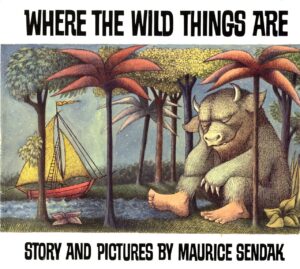 HH: Ha. My degrees actually do reflect a plan. My career began as a defense analyst, so engineering degrees in operations research (applied math) combined quite naturally with a degree in national security studies from Georgetown. The thing absent in the plan was any thought of writing fiction, though I loved reading it since elementary school, from Where the Wild Things Are up through The Lord of the Rings.
HH: Ha. My degrees actually do reflect a plan. My career began as a defense analyst, so engineering degrees in operations research (applied math) combined quite naturally with a degree in national security studies from Georgetown. The thing absent in the plan was any thought of writing fiction, though I loved reading it since elementary school, from Where the Wild Things Are up through The Lord of the Rings.
RVC: Okay, that’s a fine plan. But you eventually found your way to writing, so what sparked your interest in writing children’s books, and how did you make the transition into this career?
HH: About fifteen years ago, I wanted to share my love of fantasy with my young sons. They were too little for watching most of the fantasy movies. Struck by inspiration one day, I came up with a way to share the joy of entering the magical realms of fantasy. I would write a fantasy chapter book for them. That decision had two unintended consequences.
First, I did not anticipate was that my boys would give me feedback on the story. They devised some of the character and creature names, and made plot line suggestions. And who better to help make the story appealing to kids than other kids? So, the goal of interesting my sons in fantasy transformed into also encouraging them to write.
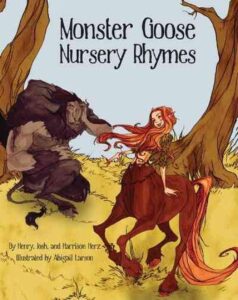 Second, I discovered that I loved writing for kids. We ended up self-publishing that book. I was hooked. I became a SCBWI member, joined a critique group, and kept honing my craft until I sold my first picture book, Monster Goose Nursery Rhymes, to a traditional publisher, Pelican.
Second, I discovered that I loved writing for kids. We ended up self-publishing that book. I was hooked. I became a SCBWI member, joined a critique group, and kept honing my craft until I sold my first picture book, Monster Goose Nursery Rhymes, to a traditional publisher, Pelican.
RVC: It seems like you get a particular kick out of mashing things up, or combining unusual things, like Little Red Cuttlefish (fairy tale + underwater story).
HH: Yes, if mixing chocolate and peanut butter produces a popular candy, why not combine two unlikely topics or literary elements to write an engaging book or story.
RVC: Good point!
HH: Now that you mention it, I think that half my picture books are mashups:
Monster Goose Nursery Rhymes = monsters + nursery rhymes
When You Give An Imp a Penny = monster + the circular structure of If You Give a Mouse a Cookie
Little Red Cuttlefish = underwater version of Little Red Riding Hood
Cap’n Rex & His Clever Crew = dinosaurs + pirates
How the Squid Got Two Long Arms = underwater version of a Rudyard Kipling Just So Story
2 Pirates + 1 Robot = pirates + robots
Some of my short stories are also mashups, including:
“Cheating Death” = teenage Marie Curie + Pet Sematary
“Bards of a Feather” = Pied Piper + The Witcher
“The Cost of Gold” = HBO’s Deadwood + Native American ghosts
“Libbie and Dewey’s Excellent Adventure” = teenage Marie Curie + time travel
“The Repairwoman” = Aladdin’s Magic Lamp + sci-fi noir
“Norsemen Cruise Line” = Dracula + cosmic horror
Mashups are fun!
RVC: Mashups absolutely are fun! Now, let’s jump to one of my favorite books of yours. Talk about the origin of I Am Smoke, a story where the smoke itself serves as a narrator through time.
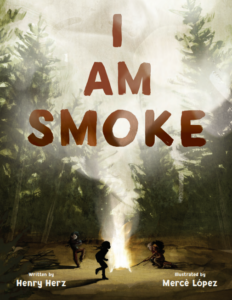 HH: I find the employment of fictional elements to convey facts a great way to engage with young readers and teach them without them realizing it. Fiction can be the melted cheese we pour on top of the broccoli of nonfiction.
HH: I find the employment of fictional elements to convey facts a great way to engage with young readers and teach them without them realizing it. Fiction can be the melted cheese we pour on top of the broccoli of nonfiction.
RVC: Yum!
HH: Now, there are some picture books with anthropomorphic characters, but I’d never seen smoke treated as a character. And who better to explain the various ways in which people have employed smoke than smoke itself? But I needed an overarching structure. I considered the chemistry of smoke. It turns out that wood smoke is primarily carbon dioxide, ash, and water vapor. Water vapor got me thinking about the water cycle—water evaporates from rivers, lakes, and oceans to form clouds. Eventually, the water precipitates as rain or snow. Rinse and repeat.
Then I considered the carbon dioxide given off by wood smoke. Two oxygen atoms and one carbon atom.
Carbon.…
Inspiration struck like lightning splitting a tree. Plants are the lungs of the Earth. They breathe in carbon dioxide through their stomata. They drink up water through their roots. Sunlight provides energy to split those molecules. The plant forms cellulose from carbon, oxygen, and hydrogen, sequestering more and more carbon as they grow. Conversely, burning tree branches releases the stored carbon. Eureka! Smoke has a “cycle” too.
RVC: Did people get it right away?
HH: 27 publishers declined the manuscript until Tilbury House bought it.
RVC: Wow.
HH: This is a lesson to all aspiring authors: be persistent. And I feel vindicated, because I Am Smoke earned the following acclaim: Kirkus starred review, ALA Notable Children’s Book 2022, School Library Journal’s 100 Scope Notes – The Most Astonishingly Unconventional Books of 2021, Kirkus 150 Most Anticipated Fall Books, National Council for the Social Studies 2022 Notable Social Studies Trade Books for Young People, Children’s Book Council’s Sept. 2021 list of anticipated bestsellers, San Diego Union-Tribune’s Fall arts preview 2021: Top book picks this season, School Library Journal’s Predictions! NYT Best Illustrated Children’s Books 2021, Evanston Public Library’s 101 Great Books for Kids List of 2021, School Library Journal’s Fuse 8 Production – 2021 Science and Nature Books, New York Public Library’s Best Books for Kids 2021, School Library Journal’s Fuse 8 Production – Best 2021 Nonfiction Picture Books, Evanston Public Library’s Blueberry Award Honor, Winner of the Book Launch Award from the Society of Children’s Book Writers & Illustrators, Towner Book Award nominee from The Washington Library Association, SCBWI Crystal Kite Award finalist, UNLV’s Children’s and Young Adult Literature: Notable Children’s Books 2022, Bank Street College of Education Best Children’s Books of the Year, SCBWI Crystal Kite Award finalist, UNLV’s Children’s and Young Adult Literature: Notable Children’s Books 2022
RVC: That’s a fantastic list–congrats!
HH: Thanks!
RVC: Beyond the lesson about persistence, what was the most important lesson that book taught you?
HH: Where there’s fire, there’s smoke. Both are dangerous. But both can be beneficial, too. The helpful uses of fire are more obvious, like providing light and heat, cooking food, making ceramics, and keeping predator animals away. Controlled fires clean forest floors, nourish the soil, promote the growth of established trees, and reduce the frequency of huge fires.
Smoke, on the other hand, was trickier. Smoke from a building fire can be deadly. Smoking cigarettes is bad for you. What surprised me most in researching the story was the many applications of smoke to help people through the millennia and across the globe. Smoke has been used to coax seeds to sprout, to drive out pests from homes, to send signals over long distances, to cover foul smells, to calm bees when harvesting honey, to flavor and preserve food, as part of religious ceremonies, and even to heal.
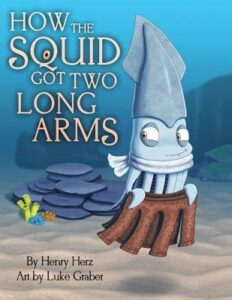 RVC: How do you approach the balance of education and entertainment in your books like How the Squid Got Two Long Arms?
RVC: How do you approach the balance of education and entertainment in your books like How the Squid Got Two Long Arms?
HH: If I’m writing fiction, then I always start with entertainment in mind. I develop the story arc and develop the characters. I like to emphasis any educational elements in the back matter, so as not to distract the reader from the story. For example, the author’s note at the back of How the Squid Got Two Long Arms provides some nonfiction information about squid. STEM back matter increases the appeal of the book to parents and educators.
RVC: Please talk about the anthologies you’ve edited and how that work differs from writing your own books.
HH: I love curating and editing anthologies. It’s great fun to be part of a team that includes highly skilled authors. I learn a ton. What’s funny is that I only realized after doing five of them how similar that is to project management. Because editing an anthology involves managing creative people (see also herding cats), tracking schedule, tracking budget, diplomatically offering constructive feedback to authors who in many cases are far more acclaimed writers than I am. I’ve edited or co-edited six anthologies so far, with two more sekret projects in the works:
- Beyond the Pale adult dark fantasy anthology (Birch Tree Publishing) – stories by Saladin Ahmed, Peter S. Beagle, Heather Brewer, Jim Butcher, Rachel Caine, Kami Garcia, Nancy Holder, Gillian Philip, Jane Yolen.
- Coming of Age: 13 B’nai Mitzvah Stories middle grade anthology (Albert Whitman & Co.) – stories by Sarah Aronson, Nora Raleigh Baskin, Barbara Bottner, Stacia Deutsch, Debbie Reed Fis
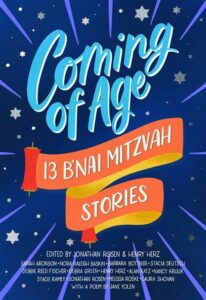 cher, Debra Garfinkle, Henry Herz, Alan Katz, Nancy Krulik, Stacie Ramey, Jonathan Rosen, Melissa Roske, Laura Shovan, Jane Yolen.
cher, Debra Garfinkle, Henry Herz, Alan Katz, Nancy Krulik, Stacie Ramey, Jonathan Rosen, Melissa Roske, Laura Shovan, Jane Yolen. - The Hitherto Secret Experiments of Marie Curie young adult horror anthology (Blackstone Publishing) – stories by Mylo Carbia, Stacia Deutsch, Sarah Beth Durst, Henry Herz, Alethea Kontis, Susanne Lambdin, Dee Leone, Jonathan Maberry, Emily McCosh, Seanan McGuire, Steve Pantazis, Lissa Price, Bryan Thomas Schmidt, Scott Sigler, Christine Taylor-Butler, Jo Whittemore, Jane Yolen.
- Wink young adult contemporary fantasy/sci-fi anthology (Brigid’s Gate Press) – can’t announce the full lineup, but it includes eight NY Times bestselling authors.
- Combat Monsters adult World War II fantasy anthology (Blackstone Publishing) – can’t announce the full lineup, but it includes seven NY Times bestselling authors.
- A Great Miracle Happened There contemporary middle grade anthology (on submission) – can’t announce the full lineup, but it includes seven NY Times bestselling authors.
RVC: Here are the much-anticipated Jim Butcher questions. How big of fan are you of the Dresden Files?
HH: A very big fan. I love how he writes his fae, and the clever tactics he devises for Harry.
RVC: What was it like working with Jim?
HH: Beyond the Pale was a reprint anthology, so I didn’t work with him on his story for that. It’s an action-packed tale of his criminal mastermind, John Marcone. I did get to meet Jim when he was on a San Diego Comic-Con author panel I moderated.

RVC: Did you ask him what the @!$@# happened with the 2007–2008 TV series?
HH: Ha, no. That is a sensitive subject for him. One of the best things about that series was that an actor with an English accent played a character with an American accent, and an actor with an American accent played a character with a British accent.
RVC: Please share some insights into your writing process. How do you develop your ideas, and what tools or rituals aid your creativity?
HH: I’m definitely a plotter (not a pantser). I don’t really have any tools or rituals beyond coffee. Creative ideas pop into my head when my muse sees fit. I have learned to shift projects if I feel stalled on a particular story, returning later with a fresh perspective. On other occasions, I submit to an open call for stories where the theme tickles my fancy. In that vein, I’m desperately hoping my submission gets accepted into a Winnie the Pooh – Cthulhu Mythos mashup anthology.
RVC: Who doesn’t have that literary hope? Now, Henry–we’ve got time for one final question for the regular part of this interview. It’s brag time! What’s coming up that you’re really excited about?
HH: The first “sequel” to I Am Smoke comes out next year, I Am Gravity. A third and fourth picture book for that series are ready to follow. My anthologies Wink and Combat Monsters are scheduled to come out next year. A publisher has expressed interest in my anthology, A Great Miracle Happened There. I have stories schedule to appear in a US Space Force-themed anthology from Baen Books, a Conan-themed anthology from Titan Books, a Dracula-themed anthology from Dracula Beyond Stoker, and an essay about occult detective fiction will appear in the 100-year anniversary issue of Weird Tales Magazine. Visit www.henryherz.com for all your Henry news needs.
RVC: Congrats on all that great news, but let’s shift gears to…The Lightning Round. Zip-zap-quick questions and zoomy-swift answers, please!!! Are you ready, Henry?
HH: Yes!
RVC: If you could only have one app on your phone, it’d be…
HH: If you mean in addition to the actual phone app, Gmail.
RVC: You get one freebie for 2024—personal chef, personal maid, or personal masseuse?
HH: Damn. A Sophie’s Choice. Personal chef, so I’d always eat healthily.
RVC: Five things you can’t do your job without.
HH: Desktop computer, Internet access, web browser, email, social media.
RVC: The last picture book that made you LOL?
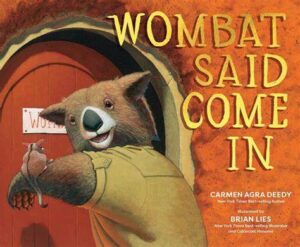 HH: Wombat Said Come In by Carmen Agra Deedy.
HH: Wombat Said Come In by Carmen Agra Deedy.
RVC: Best compliment a kid reader ever gave you?
HH: When they drew their own version of one of my book covers.
RVC: Thanks so much, Henry!
HH: Thanks for hosting me.

